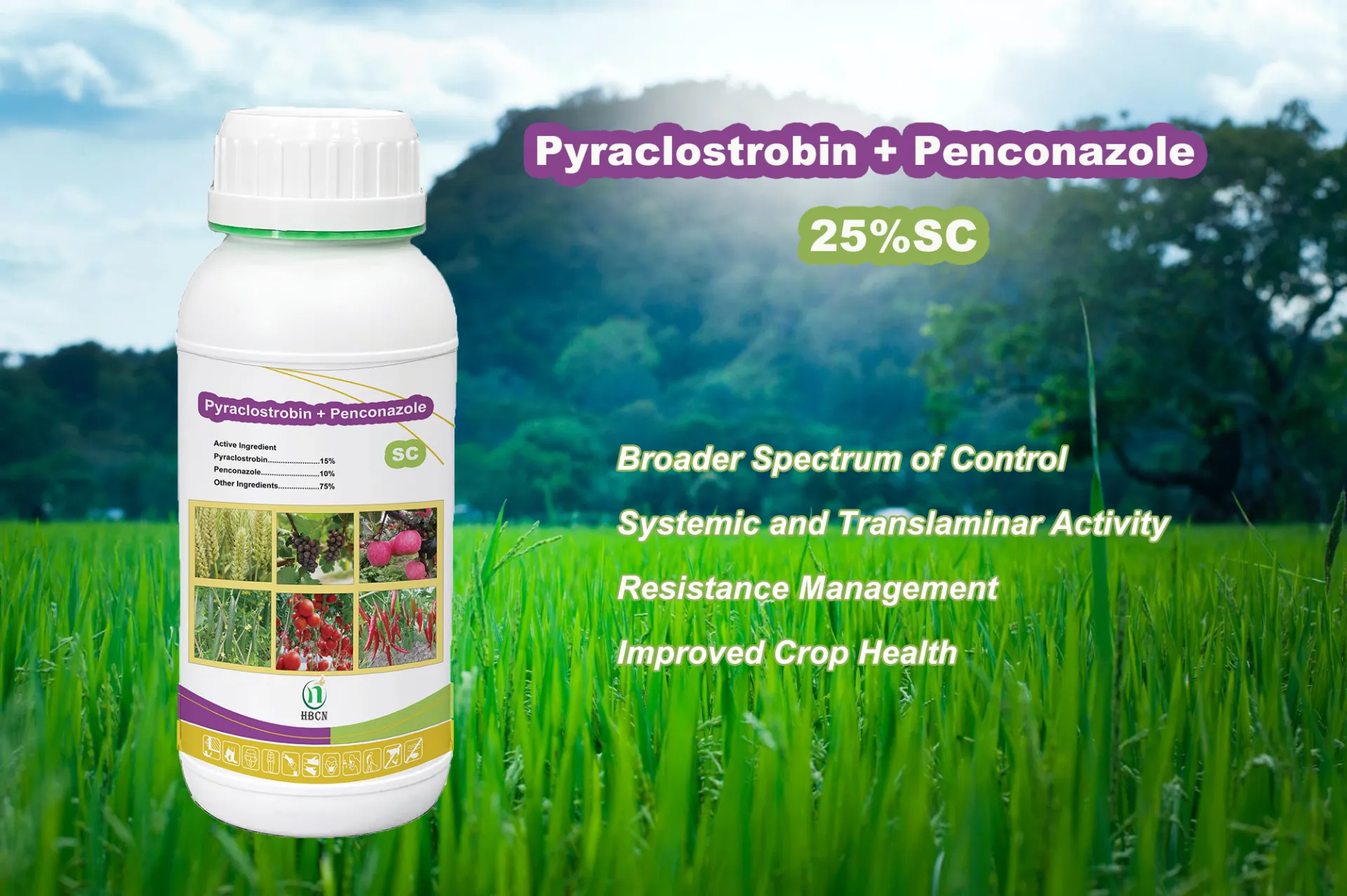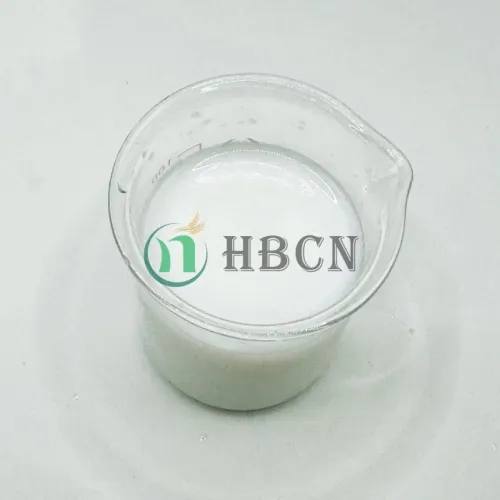
**Pyraclostrobin**: A strobilurin fungicide that inhibits mitochondrial respiration in fungal cells, effectively stopping their growth and reproduction. It has protective, curative, and translaminar activity, making it effective against a broad spectrum of fungal pathogens.
**Penconazole**: A triazole fungicide that inhibits sterol biosynthesis in fungal membranes, disrupting fungal cell wall formation. It provides protective and curative activity with systemic properties.
### Potential Results on Targeted Crops
This mixture can provide the following benefits to crops:
**Broader Spectrum of Control**: The combination is effective against a wide range of fungal diseases, including powdery mildew, leaf spots, rusts, and anthracnose, depending on the crop.
**Systemic and Translaminar Activity**: The systemic nature of Penconazole and the translaminar properties of Pyraclostrobin ensure thorough protection, including new growth after application.
**Resistance Management**: Using two fungicides with different modes of action reduces the risk of resistance development in target pathogens.
**Improved Crop Health**: Pyraclostrobin often exhibits additional benefits such as enhanced plant vigor, improved photosynthesis, and stress tolerance.
### Example Applications by Crop
- **Wheat**: Effective against rusts, leaf blight, and powdery mildew.
- **Fruits (e.g., grapes, apples)**: Controls powdery mildew, black spot, and scab.
- **Vegetables (e.g., cucumbers, tomatoes)**: Treats powdery mildew and anthracnose.
- **Ornamentals**: Protects against rusts and powdery mildew.

### Key Considerations
- **Compatibility**: Test for phytotoxicity before large-scale use, especially when mixing with other products.
- **Application Timing**: Apply preventatively or at the onset of disease symptoms for optimal effectiveness.
- **Environmental Safety**: Follow local guidelines to avoid




